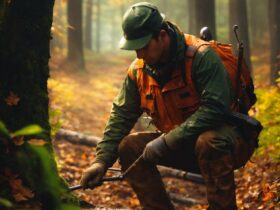When it comes to surviving in the wild, one of the most important things to consider is food. In a survival situation, knowing what plants and animals are safe to eat can mean the difference between life and death. In this article, we will discuss some of the best options for finding food in the wild.
Plants are often the easiest and safest option when it comes to foraging for food in the wild. There are many edible plants that can be found in forests, meadows, and along riverbanks. Some common edible plants include dandelions, clover, cattails, and wild berries. It is important to be able to identify these plants correctly, as some may have toxic lookalikes.
In addition to plants, insects can also be a good source of protein in a survival situation. Many insects are safe to eat and can provide valuable nutrients. Some popular edible insects include ants, grasshoppers, and crickets. It is important to cook insects before eating them to kill any potential bacteria or parasites.
When it comes to hunting for food in the wild, small game such as rabbits, squirrels, and birds are good options. It is important to have the proper tools for hunting, such as a bow and arrow or a slingshot, and to be able to accurately target and kill the animals. It is also important to cook the meat thoroughly to kill any potential pathogens.
Fish can also be a good source of food in the wild, especially if you are near a body of water. Fishing can be done with a variety of methods, such as using a fishing pole, a net, or even a makeshift trap. Fish are high in protein and essential nutrients, making them an important part of a survival diet.
In a survival situation, it is important to stay hydrated and energized. Eating a variety of foods will help provide the necessary nutrients and energy to keep going. It is also important to be cautious when foraging for food in the wild, as some plants and animals can be toxic if consumed.
Overall, knowing what to eat in the wild is a crucial skill for survival. By being able to identify edible plants, insects, and animals, you can ensure that you have the necessary sustenance to survive in the wild. Remember to always cook food thoroughly and to stay hydrated to stay healthy and safe while foraging for food in the wild.





Leave a Reply